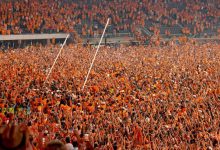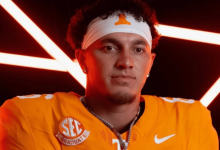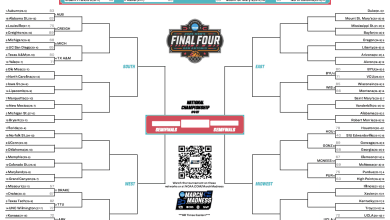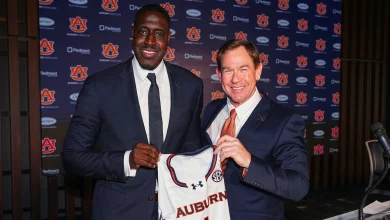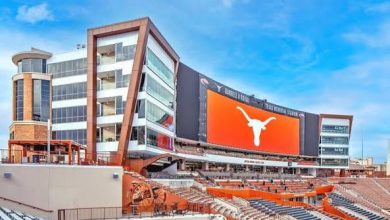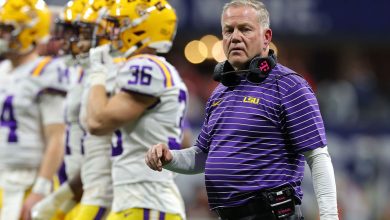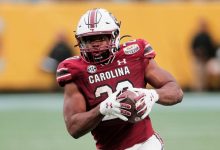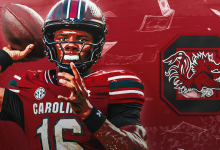An Ohio judge dismissed Terrelle Pryor’s lawsuit against Ohio State, the Big Ten, and the NCAA, ruling he is not entitled to retroactive NIL compensation for his college career.
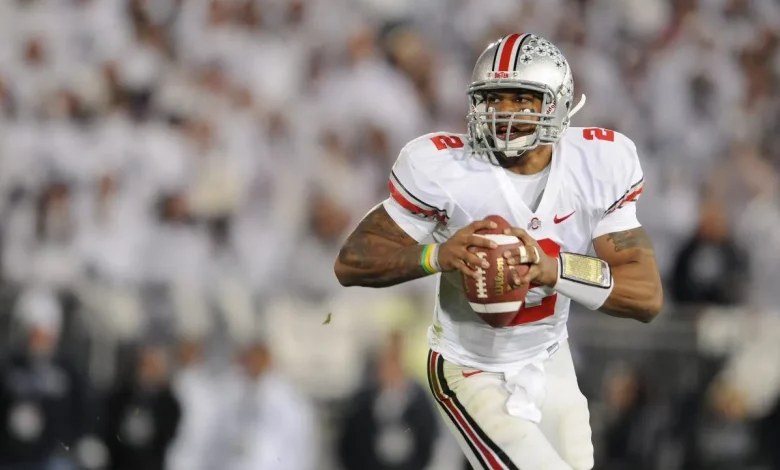
In recent years, the landscape of college athletics has undergone significant changes, especially concerning athletes’ rights to monetize their Name, Image, Likeness (NIL). Yet, legal disputes persist over whether athletes can claim retroactive compensation for their college careers. One prominent case involved Terrelle Pryor, a former Ohio State quarterback and one of college football’s most recognizable figures. Pryor filed a lawsuit seeking retroactive NIL compensation from Ohio State, the Big Ten Conference, and the NCAA, asserting that he was unfairly deprived of earnings generated from his NIL rights during his college years.
However, an Ohio judge dismissed Pryor’s lawsuit, ruling that he is not entitled to retroactive NIL compensation for his college career. This decision underscores the legal boundaries surrounding athlete compensation, the NCAA’s authority, and the evolving NIL landscape. This article provides a detailed analysis of the case, the legal principles involved, the implications for college athletes, and the future outlook of NIL rights.
Background of the Case
Terrelle Pryor played for Ohio State University from 2008 to 2011. During his college career, Pryor was a standout athlete, gaining national recognition. His prominence and marketability meant he had the potential to earn significant income through endorsements and other NIL avenues if such rights had been available or recognized at the time.
Pryor’s lawsuit argued that he was unfairly deprived of earning opportunities related to his NIL rights during college. He contended that the NCAA’s restrictions on athlete compensation violated his rights under federal and state law, including antitrust statutes. Pryor sought damages and retroactive compensation, claiming that he should be compensated for the use of his NIL during his college years.
Legal Context and NCAA Policies
The NCAA has historically maintained a strict amateurism model, prohibiting student-athletes from earning money related to their athletic performance, including NIL rights. This model aimed to preserve the amateur status of college athletes and maintain the integrity of college sports.
Pre-NIL Era: Up until 2021, NCAA rules explicitly barred athletes from profiting from their NIL rights. Athletes could not accept endorsement deals or other commercial opportunities that involved their NIL, and violations could result in sanctions, including suspension or ineligibility.
NIL Legislation and Policy Changes: The landscape shifted rapidly in 2021 when multiple states, including Ohio, enacted legislation allowing NIL compensation for college athletes. The NCAA also updated its policies, permitting athletes to profit from NIL activities, albeit within certain guidelines. These changes aimed to provide athletes with more rights but also introduced legal complexities around the question of retroactive compensation.
Legal Debates: The core legal questions surrounding Pryor’s lawsuit centered on whether athletes could claim compensation for past NIL rights that they were prohibited from exploiting during their college careers. Courts have generally upheld the NCAA’s authority to regulate amateurism, but the legal landscape is evolving, especially with state laws permitting NIL earnings.
Details of Pryor’s Lawsuit and Court Proceedings
Pryor’s lawsuit was filed in Ohio, seeking to establish that he was entitled to compensation for NIL rights during his college years. He claimed that the NCAA, Ohio State, and the Big Ten conspired or otherwise failed to provide him with the opportunity to profit from his NIL rights during his time as a student-athlete.
Arguments Presented:
- Pryor argued that the NCAA’s restrictions were unlawful and violated antitrust laws.
- He claimed that he was entitled to retroactive compensation, asserting that his NIL rights were unlawfully withheld.
- Pryor also argued that the NCAA’s policies constituted an unfair restraint of trade, especially given the recent legal and legislative developments.
Defendants’ Defense:
- The defendants maintained that NCAA rules were within their authority to regulate amateurism.
- They argued that Pryor voluntarily participated in college sports under the existing regulations.
- The NCAA contended that NIL rights are prospective, and any changes allowing athletes to profit are not retroactive.
The Court’s Ruling and Reasoning
In dismissing Pryor’s lawsuit, the Ohio court cited several key legal principles:
- NCAA’s Authority and Amateurism: The court reaffirmed that NCAA rules are protected under the “state-action doctrine,” which shields certain private associations’ rules from antitrust scrutiny if they serve to preserve amateurism and the integrity of college sports.
- Retroactivity and Prospective Nature of NIL Rights: The court emphasized that the recent legalization of NIL rights in some states and the NCAA’s policy updates are prospective changes. Pryor’s claims for retroactive compensation are incompatible with the legal framework, which generally does not support retroactive payments for rights that were not legally recognized or accessible at the time.
- Participation Under Existing Rules: Pryor voluntarily participated in college athletics under the NCAA’s restrictions. Courts often uphold the principle that athletes who participate under existing rules cannot claim retroactive rights or compensation.
- Legal Precedents: The court referenced prior rulings that have upheld NCAA regulations against antitrust challenges, reinforcing that the NCAA’s authority to regulate amateurism remains intact.
Outcome:
The court dismissed Pryor’s lawsuit, effectively ruling that he has no legal basis to claim retroactive NIL compensation for his college career.
Implications of the Ruling
The court’s decision has broad implications for current and former college athletes, the NCAA, and the future of NIL rights:
- Limits on Retroactive Claims: The ruling clarifies that athletes cannot seek compensation retroactively for NIL rights during periods when such rights were not legally recognized or permitted under NCAA rules.
- Reinforcement of NCAA Authority: The decision underscores the NCAA’s authority to regulate amateurism and NIL rights, especially regarding existing restrictions.
- Legal Challenges to NCAA Policies: While this case was dismissed, it does not preclude future legal challenges, especially as NIL rights become more entrenched and legislated at the state level.
- Prospective vs. Retroactive Compensation: The ruling emphasizes that NIL rights are generally prospective, meaning athletes can benefit from NIL opportunities moving forward but cannot claim past earnings.
Broader Context and Future Outlook
The Pryor case exemplifies ongoing debates around athlete compensation, NIL rights, and the legal limits of NCAA authority:
- Changing NIL Landscape: Since the NCAA’s policy shift in 2021, athletes have successfully monetized their NIL, but the scope remains limited to current and future opportunities.
- Potential for Future Litigation: As NIL rights become more widespread and legislative frameworks evolve, athletes may pursue legal claims for past earnings, especially if they can demonstrate that restrictions were unlawful or discriminatory.
- State Legislation and Federal Action: Multiple states have enacted NIL laws, creating a patchwork legal environment. There is increasing pressure for federal legislation to establish uniform NIL rules and protections.
- Ethical and Fairness Considerations: Beyond legalities, discussions continue about what constitutes fairness in athlete compensation, especially considering the revenue generated by college sports.
The Ohio court’s dismissal of Terrelle Pryor’s lawsuit marks a significant milestone in the ongoing debate over NIL rights and NCAA authority. It underscores that, under current legal standards, athletes cannot seek retrospective compensation for NIL rights during their college careers if such rights were not legally recognized or accessible at the time.
While this ruling limits the scope of athlete claims for past earnings, it also highlights the importance of prospective NIL opportunities, which are now available in many jurisdictions. As NIL laws and NCAA policies continue to evolve, future legal challenges and legislative reforms are likely to shape the landscape of college athlete compensation in the years ahead.
This case serves as a reminder of the complex intersection of law, sports governance, and athlete rights—an area poised for ongoing legal and policy developments.

